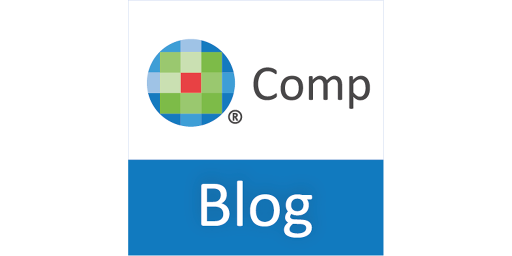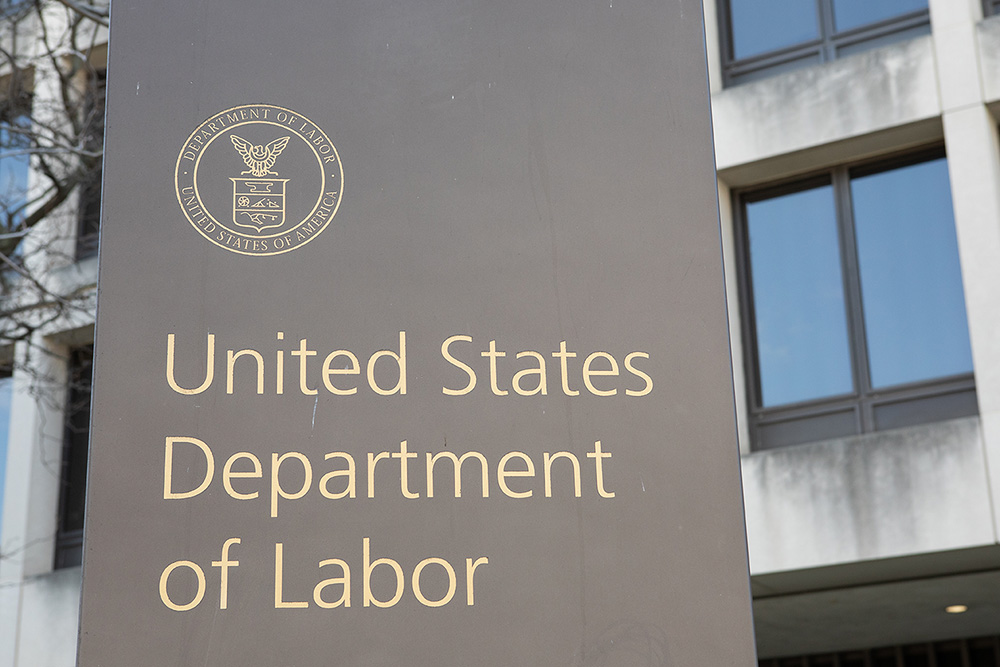Predictably Uncertain : Managing merger call-in risks at local level in EU
What happened? The Belgian NCA applied the TowerCast principle in two different cases. Proximus eventually divested EDPNet to Citymesh by November 2023. The merger did meet Belgian notification requirements. The firms appeared to be the two largest flour suppliers to artisan bakeries within Belgium. The NCA expressed concern about a “significant impediment” to effective competition, which is surprising when a pre-intervention under Article 101 TFEU is involved. On 20 March 2025, the Belgian NCA announced that it is considering closing its probe because it was informed that deal was to be terminated.
Denmark*
Call-in?
Yes. Since 1 July 2024, the Danish Competition Authority (
DCCA
) may call-in a transaction for merger review if the combined annual turnover in Denmark of the undertakings involved is at least DKK 50 million and the DCCA assess that there is a risk that the transaction significantly may impede competition (in Denmark).How does it work? The DCCA will decide whether to call a merger in for assessment within 15 days of becoming aware that the threshold has been met. This means, in effect, that the deadline won’t start until it has enough information to assess if the transaction poses a significant risk to competition. In practice, to be sure of the outcome, parties will need to submit a notification to activate the 15-day deadline. The DCCA has not denied this, explaining that to assess the need for a call-in, they must at least actively be made aware of the transaction and be provided with relevant and sufficient information.* A call-in request must be made no later than 3 months after signing unless specific circumstances apply, e.g. The DCCA has not received any responses from the parties or they have not disclosed their signing until after the 3-month period. If the DCCA exercises its call-in power after the transaction is closed, parties risk being ordered to unwind the transaction. If the call-in power is exercised post-closing, parties risk being ordered to unwind the transaction.* Call-in must be requested by the DCCA no later than 6 months after closing of the transaction.* Implications?
To our knowledge, the call-in power has not been used to date. Commentators claim that the DCCA only has enough information to determine if a call-in is necessary after receiving the same information that would be included in the typical merger notification at the normal thresholds. While the DCCA has explained that they expect the call-in option to be exercised only once or twice per year, we note that almost all transactions will nonetheless need to be assessed (to determine whether a call-in is needed), and that a discussion with the DCCA in this regard could be expected for far more than the few transactions which are ultimately called in.Finland*
Call-in?
Not in place currently
.* How things stand?
The Finnish Competition and Consumer Authority ( FCCA) is heavily lobbying for call-in powers, most recently following a sector inquiry into the veterinary sector. This is not the first time the FCCA has requested a call-in power, having already done so before the most recent amendment to the competition act (in which the merger thresholds were considerably lowered but no call-in power was introduced).* It is likely that there will be a legislative change granting such powers, but there is nothing in the Finnish parliament’s pipeline just yet. The FCCA will likely use the recent veterinary investigation to support its request. However, there is no indication that sector-specific rules would be implemented. The FCCA would likely not support that solution either, as there are other highly concentrated sectors in Finland.France* Call-in? Not in place currently.
What next? * The French NCA held a consultation in 2025 on possible options for call-in power for below-threshold merges. Three options were considered.o Create a targeted call in power based upon quantitative and qualitative criteria.
o Require mandatory notification when a business is subject to a prior merger clearance or prohibition decision.
o Another option is to require mandatory notifications where a company has been designated a Gatekeeper by the Digital Markets Act. o Finally, the third option, which is already open to French NCA, would be to limit enforcement to current antitrust laws after the merger has been implemented, as TowerCa,ooooo
o
101010o
o
o 10oo10oo010010 In fact, high ranking officials in the French NCA have indicated in public statements that the French NCA is keen to make use of the full ambit of powers offered by the Towercast ruling.Hungary* Call-in? Yes – a voluntary below-threshold regime is in place in Hungary that is similar in practice.
How does it work?
A “soft”, or voluntary, regime is in place for certain transactions. This applies if, in the last financial period, the combined turnover of all the concerned undertakings in Hungary was more than HUF 5 Billion and it is not obvious that the concentration will not significantly hinder effective competition on the relevant market due to the creation or consolidation of a dominant role. Prior to January 20, 2023, notification was mandatory if the “soft” threshold was met. Even though notification is voluntary for the “soft” threshold, the Hungarian Competition Authority (GVH) may initiate proceedings to review the concentration within 6 months from the date when the concentration was implemented (and thus may practically require the parties to notify the concentration to the GVH).
*
Implications? As the notification is voluntary, there is no standstill requirement in these cases. The GVH can, in practice, compel the parties to notify if it initiates proceedings after learning of the merger. It may also apply interim measure to mitigate any expected negative effects of the concentration or to restrict the control rights to the acquirer as necessary. If the GVH initiates a competition proceeding (i.e. After a Phase I or II proceeding, the GVH may decide to take any necessary measures (including an possible prohibition of concentration) to restore competition. If the parties are unsure if the “soft” thresholds have been met, they can initiate prenotification talks with the GVH. To date, since the introduction of the mechanism in 2023, there has been only one “called-in” merger reported by the GVH (with no published decisions yet). Iceland* Call-in?Yes. The Icelandic Competition Authority (ICA) may require parties to notify transactions that fall below Iceland’s mandatory turnover thresholds if the combined turnover of the merging entities exceeds ISK 1.5 billion (approx. The Icelandic Competition Authority (
ICA) may require parties to notify transactions that fall below Iceland’s mandatory turnover thresholds if the combined turnover of the merging entities exceeds ISK 1.5 billion (approx.
How does it work? *
The legal test that is applied in the ICA evaluation is the same as that which applies to the ICA interventions addressing potential distortions of the competition. Upon submission, a standstill is imposed on the transaction until the ICA approves the merger. The call-in provision doesn’t specify a specific time limit under which the ICA can use this option, so there is some uncertainty as to the exact timeline in which it has the authority to act. The ICA can require formal notification of a transaction if it feels that it is warranted. However, parties are free to notify the ICA about a particular transaction without prompting. It should be noted that the provision does not explicitly state that it pertains to turnover in Iceland, although that was likely the legislator’s intention, as indicated by the preparatory works of the provision.
* Implications? The call-in power was recently employed in the acquisition of the telecommunications infrastructure company Mila by French investment firm Ardian France SA. The ICA has yet to issue formal guidance on the application of these call-in powers. Ireland*Call-in? Yes. In July 2022, Ireland amended section 18 of its Competition Act, and, in part, granted a new power to the Competition and Consumer Protection Commission (CCPC
) to compel parties to notify the CCPC of transactions which fall below Ireland’s turnover thresholds for mandatory notification, but which nonetheless may, in the CCPC’s opinion, impact competition in Ireland.
How does it work? Transactions that are subject to a call-in will be subject to a stop and wait obligation once notified by the CCPC. The CCPC can impose interim measures if a transaction is completed at the time the call-in occurs. The CCPC can only call in a fusion within 60 working days from the earliest date of: (i), the date a public offer is made or announced but not accepted; (ii), the date it becomes aware that a transaction has been signed; or (iii), the date of the closing of a deal. Pre-notification discussions are not required or formalised in Ireland, but parties may engage with the CCPC ahead of the implementation of a transaction in cases of doubt.*
Implications?
This power has not yet been used and there is no formal guidance from the CCPC on how it will be applied. Italy* Call-in? Yes. Since 27 August 2022, the Italian Competition Authority (ICA) can require undertakings to notify below-threshold mergers within 30 days from the request.
How does it work? If the transaction meets two criteria, namely,
i. One of three criteria for “turnover:”
a. The group of companies involved achieved a combined turnover of EUR 567,000,000 in Italy,
b. At least two of the involved companies achieved a combined turnover in Italy of EUR 35 million. The combined global turnover of the merging parties is greater than EUR 5 billion.
ii. A “competition concerns” criterion is used when the ICA identifies significant competition concerns on the Italian market, or a relevant portion of it. This includes potential harm to small businesses with innovative business strategies. The ICA has stated that it will consider a number of factors when making its assessment. These include:
i. the market structure,
ii. the characteristics of the undertakings involved,
iii. the nature and relevance of their activities to consumers or other businesses,
iv. The importance of innovative activities and
v. Competitive constraints regardless of market share.
* According to the Notice, where the post-transaction index of market concentration (HHI) or combined market share remains below certain thresholds there are no material concerns about competition.
* However, the NCA may take into account additional factors, especially when turnover does not indicate the competitive constraint. These include where the undertaking:
i. is a start-up or a new operator with significant competitive potential,
ii. It is an important innovator or conducts research that is potentially significant or is a major real or potential competitor. owns assets that are particularly valuable from a competition perspective, and/or provides products or services that are key inputs for other sectors.
* If none of the undertakings involved generate turnover in Italy, the NCA will assess whether the merger can affect the Italian market by considering:
i. If the activity is aimed at users/consumers in Italy of the undertakings services,
ii. The presence of the undertakings in Italy,
iii. The conduct of R&D that could be relevant to the Italian Market,
iv. Existence of a plan to enter into the Italian market. Any other connection with the Italian market, or a significant portion of it.
* Below threshold mergers must be reported within 30 days after the call-in request. The NCA can extend this period. If the merger is not notified within this period, the usual fines for failure to notify apply.
*
Implications?
Since introducing the call-in power to the NCA, several merger cases below the threshold have been reviewed. Four cases were cleared in Phase 1 Two cases (one voluntarily notified) underwent Phase 2 investigation and ultimately resulted in conditional clearance.
* The cases reviewed involved various sectors, including outdoor advertising, wood processing, maritime freight transportation, rental, laundering and sterilization of textiles and medical instruments, and cement manufacturing and distribution.
* Notably, as mentioned above, the NCA used its call-in power in October to submit a referral request to the European Commission concerning the NVIDIA/run:ai case.Lithuania*
Call-in?
Yes. Since April 2004, the Lithuanian Competition Council (
LCC ) has the power to request the parties to notify the transaction even if the mandatory turnover thresholds are not exceeded, provided that it is likely that a dominant position will be created or strengthened, or competition will be significantly restricted as a result.How does it work? Within 12 months after the transaction, the LCC may exercise this power. In Lithuania, pre-notification is neither mandatory nor formalized. However, parties can engage with the LCC in cases of uncertainty before implementing a deal. Transactions subject to call-in become subject to a standstill obligation once notified, with the potential to significantly disrupt transaction timelines.* Implications? The LCC has exercised this power several times and in a few cases ordered the parties to reverse or modify transactions.
* The power was first exercised was in 2013, following concerns that a transaction between companies providing maintenance services for apartment buildings could restrict competition in Vilnius. After an investigation, the LCC did not object to the transaction.* In 2016, the LCC prohibited a merger between two Estonian companies, AS Eesti Meedia and AllePAL OU, whose Lithuanian subsidiaries were major operators of classified ads websites for real estate and vehicles in Lithuania. This decision is under appeal. This decision is under appeal.* In 2023, the LCC conditionally approved Kauno Liftai’s transaction in the markets for the technical maintenance and repair of elevators in various Lithuanian cities, provided that the company divested part of its business.
* These cases show that there is an increased usage of the call-in power during recent years, a trend expected to continue as the LCC does not hesitate to scrutinize even smaller transactions, if those appear problematic from the relevant market perspective.Netherlands*
Call-in? Call-in?
* What is the current situation?
ACM chairman Martijn Snoep, in his blog titled “Small Acquisitions, Big Trouble
“, has called on the Dutch legislators to introduce a call in power for mergers below threshold. Mr. Snoep supports call-in powers, arguing that they are a targeted measure that does not add unnecessary’redtape’ to mergers without problems. He says that the uncertainty caused by call-in power can be reduced by allowing transactions to be filed voluntarily and by reducing time for the ACM to decide whether or not a transaction should be called in. Mr. Snoep repeated his pleas to the legislator in later blogs of 12 April 2024 “Large companies, large risks
” and 7 November 2024 “Update of competition supervision
“. * The ACM’s pleas have not gone unnoticed. The Minister of Economic Affairs wrote to the Dutch parliament on 14 October 2024 to express his concern over the potential negative effects of a number of below-threshold and killer acquisitions. He also stated that the Ministry was looking into various options to address this. The proposed legislation would require the ACM to send a request for information to parties involved in a below threshold transaction. This would allow the ACM assess whether or not the deal could have a negative impact on competition within the Dutch market. The ACM could then call in a deal for review if it identifies any such concerns. Call-ins would also impose a stoppage obligation for transactions that are not yet completed. The draft suggests information requests may be sent up to 6 months after the transaction is implemented.Norway*Call-in? Yes. While Norway’s existing threshold for mandatory filing is low, since 2004 the Norwegian competition authority (the “NCA
The only criteria are that the NCA finds that there are
“
reasonable grounds” to assume that competition is being affected or if “particular reasons” suggest that the NCA should review the merger / acquisition. * A standstill obligation commences upon exercising the call-in power, though it may be possible to engage in discussions with the NCA to seek concessions. The acquiring party may be forced to restore the competitive environment to what it was before the merger/acquisition. The NCA can order a review up to three months following the earliest of the two events: a full agreement is entered into or the target company is taken over. It may also be informed of a merger or acquisition through media attention, press releases or complaints. These sectors cover the following: concrete, alarm systems, ev-charging, sports equipment, accounting systems, web-based marketplaces, fuel, energy, waste, printed media, dry cleaning and garden centers.* Implications? The NCA has used their call-in power on several occasions since its introduction, most recently in Q4 2024. Areas of high risk are those where the NCA has imposed an information duty and in emerging markets / markets susceptible to larger players engaging in killer acquisitions.* Since the increase in the Norwegian merger control thresholds in 2014, the NCA has used the call-in option on nine occasions, many of them in markets in which there is also an information / reporting requirement.* As Norway is not a member of the EU, it cannot itself request a referral to the Commission. However, it can endorse and support such a request from another Member State’s NCA and has done so in the past, including in Illumina/Grail.* The original justification for the call-in power was that Norway is a country with many small regional or local markets, for logistical and demographic reasons, resulting in a need to be able to review mergers involving relatively low turnover, but with a potentially high impact in regional and/or local markets. Over time, this power has been used to refer deals that are of national interest or in markets perceived as highly concentrated or where there is an impedement to competition. It has also been used to review “killer acquisitions” and mergers in emerging markets.* A task force mandated to review amendments required in the competition act is due to deliver recommendations by December 2025.Slovenia
*
Call-in?
Yes. The Slovenian Competition Protection Agency (CPA) must be informed of concentrations which fall below Slovenia’s turnover thresholds for mandatory notification if the undertakings concerned reach certain market share thresholds. This could lead to a call-in.
How does it work?
The CPA must be notified of any transactions that result in a combined market share post-transaction in the relevant market in the Republic of Slovenia of more than 60% within 30 days of the transaction. CPA can request formal merger notification within 25 business days after being informed or becoming aware of the transaction. The CPA cannot request a call-in after 25 business days, but has requested further information in certain cases and interpreted the deadline for a call-in as starting only after it receives all information (the requirements for which are not formally set out) about the concentration. The CPA cannot request a call-in after 25 business days but has requested further information in certain cases and interpreted the deadline for a call-in as starting only after it receives all information (the requirements for which are not formally set out) about the concentration.
Implications?
To date, the CPA has rarely exercised its powers to call-in mergers, with only one or two cases in the last 10 years where the concentration resulted in a market share exceeding 60%.
The CPA also interprets the obligation to inform the CPA of concentrations to apply where only one undertaking concerned has a market share exceeding 60% in Slovenia. This interpretation applies to a market that is larger than the national one. It suffices that the market share in Slovenia exceeds 60%, even if the market share in the broader relevant market is below 60%.
Informing the CPA in cases where the market share exceeds 60% in Slovenia is advisable, as the parties can gain legal certainty that the CPA can no longer request a call-in after 25 business days.Sweden
* Call-in? Yes. Call-in? Yes.How does it work?
- * In general, mergers must be reported to the SCA when (i) both undertakings had a combined turnover in Sweden of more than SEK 1 billion in the previous financial year, and (ii), at least two undertakings had each had a Swedish turnover exceeding SEK 200 millions in the prior financial year. The SCA can force a party, if the threshold of 1 billion but not 200 million is met, to notify a merger if it is necessary for special reasons. For example, a strong firm buying out its competitors or a company with a large market share buying a new challenger. The SCA may also call in a merger if it believes that the merger will harm competition. A party may choose to pre-empt a call-in from the SCA and notify the merger voluntarily.
- * Implications?
- The SCA has used its call-in power on seven occasions between 2005 and 2024, concluding that there have been special reasons with reference to the acquisition of (i) a competitor in a market with strong vertical links between the parties (Bonnierforlagen/Pocket Shop), (ii) the only competitor on a certain market (Assa Abloy/Prokey), or (iii) the largest competitor (Easypark/Inteleon) and (St Eriks/Meag). These cases show that the regulator takes into account the opinions of customers and competitors when assessing a merger. In at least three cases, the target company had a turnover between SEK 123-190 million, which is close to the mandatory threshold. These are not “killer acquisitions” but rather cases where combined market shares are large, despite not meeting turnover thresholds.
- * In addition, firms have chosen voluntary notifications 25 times from 2010 to 2024. These notifications are often made after discussions with the SCA, where the regulator has indicated special reasons or that the parties themselves have done a self-assessment. These notifications seem to be related to areas of activity that fall under the new Swedish FDI law, which is probably a result of its broad scope. These notifications seem to have been made due to a variety reasons (e.g. turnover near thresholds, prior experience from filings or inquiries from the SCA, etc.). ).





